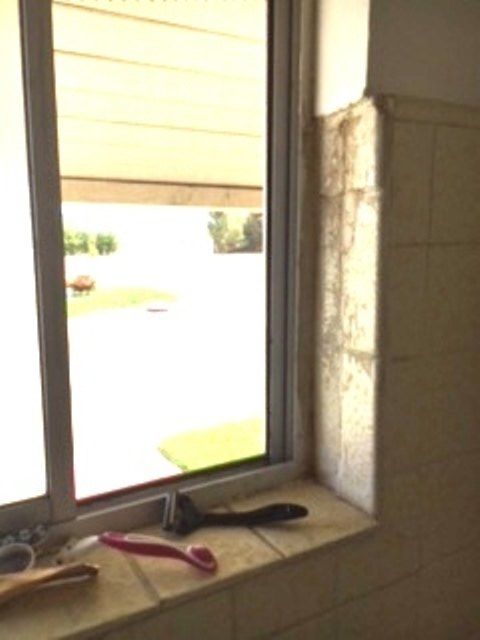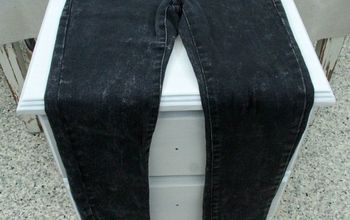Cracked wall

-
If the wall is sheet rock,you can use caulk, dap, spackle, etc. if the cracks are caused by foundation problems get that fixed first.
 Dee
on Jun 07, 2015
Helpful Reply
Dee
on Jun 07, 2015
Helpful Reply -
-
Ill get slack for this one but at 5 in the morning, the first thing that i thought of was "stop telling it jokes"
 Jeanine
on Jun 07, 2015
Helpful Reply
Jeanine
on Jun 07, 2015
Helpful Reply -
-
First get your foundation checked. Cracked walls, sticking doors and uneven floors are a sign of a foundation problem. If that's okay, then spackle sand, spackle, sand and paint?
 Arts Be Crafty
on Jun 07, 2015
Helpful Reply
Arts Be Crafty
on Jun 07, 2015
Helpful Reply -
-
Agree with CPA - hire a professional to check foundation first thing, the proceed with above repair.
 Lindy
on Jun 07, 2015
Helpful Reply
Lindy
on Jun 07, 2015
Helpful Reply -
-
Sinking foundation is my first thought, could be the framework rotting/ swelling from too much moisture.
 James
on Jun 07, 2015
Helpful Reply
James
on Jun 07, 2015
Helpful Reply -
-
Houses settle, that is just a fact. If it is a major movement, that would be a problem but minor settling is normal. The loose stuff should be dug out and in fact, there should be some dug out all through the crack so that the new durabond can grab. A minor crack can be spackled I suppose but it will likely come back. Durabond and drywall tape should be applied, then a couple coats of drywall mud. Then it should be feathered out with sandpaper, textured to match the surrounding area, primed, and painted. And then it still may come back eventually if the house settles much more. So minor cracks can just be covered with spackle whenever it happens, major cracks should be left to the pros.
 Brandon
on Jun 07, 2015
Helpful Reply
Brandon
on Jun 07, 2015
Helpful Reply -
-
agree that if your house is settling then call a licensed professional, now if the are cracks in the drywall seams then that is something you can handle....those type of cracks are usually straight lines...get your house checked out to find out what type of cracks you have...drywall seam cracks head to the home improvement store and ask someone what you need...or hit the Internet...
 Shelley
on Jun 07, 2015
Helpful Reply
Shelley
on Jun 07, 2015
Helpful Reply -
-
It is also possible that your support post needs to be adjusted if you have one. Go to the floor below the area of the crack and see if the support is a round metal beam with a large screw and nut at the top near where the crack is above. You might even have a 'hump" on the floor above. Turn the nut 1/2 turn at a time every couple of months til the "hump" is gone. Then do your repairs. This only applies to this kind of support. Good luck.
 Linda Hunt
on Jun 07, 2015
Helpful Reply
Linda Hunt
on Jun 07, 2015
Helpful Reply- See 1 previous
-
-
There is elastic spackling out now, the paint may crack over it but the crack can slightly flex under it. But I would see if your house is settling also. Sometimes that is also an easy fix. She asked how to fix a crack in the wall, why do so many people not even answer the question?
 Gary Stenzel
on Jun 07, 2015
Helpful Reply
Gary Stenzel
on Jun 07, 2015
Helpful Reply- See 1 previous
-
-
Lowe's and Home Depot have a product called Crack Eraser that looks sort of like a deodorant stick(heehee) and they also have a spray "paint" that covers and allows you to paint over the crack. Of course this is for those little boo-boos of unknown cause or origin...ie. NOT for the ones from settling. This can also be used for the annoying nail"pops" in the ceiling (usually in laundry or bath). In this case, use a nail set to push the nail back in, use a flat head screw to assist the nail in doing its job, cover with erase or spackle, spray it and paint.
 Msi1170121
on Jun 07, 2015
Helpful Reply
Msi1170121
on Jun 07, 2015
Helpful Reply -
-
You didn't say if the wall was of dry wall or plaster. Different materials require different treatment. On plaster walls with broken keys (the extra cement that spills through the back of the lathes to secure the plaster), fixing is easy using roofing washers (large washers with small holes) and drywall screws. Put the screw through the roofing washer and screw into crack. It provides a new artificial key that can't fail. Use as many as required to repair the problem and then cover with a skim coat, prime and repaint. This came from one of the fix it show and works great.
 Dragonintheattic
on Jun 07, 2015
Helpful Reply
Dragonintheattic
on Jun 07, 2015
Helpful Reply -
-
I am not sure how wide the crack is or how long. I usually take a flat screwdriver or an exacto knife and make a groove in the crack so the drywall mud has a place to go, it will need another coat of mud feathered out, let dry between coats, sand, prime and paint as usual. The most important part is making a groove for the mud to sit in in the first coat or it won't stay. Hope this helps.
 Susan
on Jun 07, 2015
Helpful Reply
Susan
on Jun 07, 2015
Helpful Reply -
-
Thank you for all the responses. I've been away and I can't get answers on my smartphone. Lots of responses for I thought was a simple question. I'm afraid it's structure, but I don't know. The painters spackled over it, sanded and painted over it 2 years ago, but it's back, so I'm thinking it's structure.
 Judy Shea
on Jun 08, 2015
Helpful Reply
Judy Shea
on Jun 08, 2015
Helpful Reply -
-
You don't want to get an exacto knife gently in the crack...you want to make a "v" shaped trench so the mud has something to go into. Once that has dried, sand if necessary and apply the 2nd coat of mud feathering out from the crack. Let it dry, sand, prime paint....good luck !
 Susan
on Jun 10, 2015
Helpful Reply
Susan
on Jun 10, 2015
Helpful Reply -
Related Discussions
How to get rid of mice?
We seem to have some unwelcome Mickeys and Minnies in our house. What is the best way to get rid of them?
How to remove popcorn ceiling with asbestos?
I want to remove my popcorn ceiling, but it has asbestos in it. How do I go about this safely?
How to caulk baseboard gaps?
How do I fill gaps at baseboard, should I caulk? If so, does anyone know how to caulk baseboards?
How to fix squeaky hardwood floors?
How do I fix squeaky hardwood floors?
I'm a renter - how to FIX cracked bath/shower/walls & window ?
?




